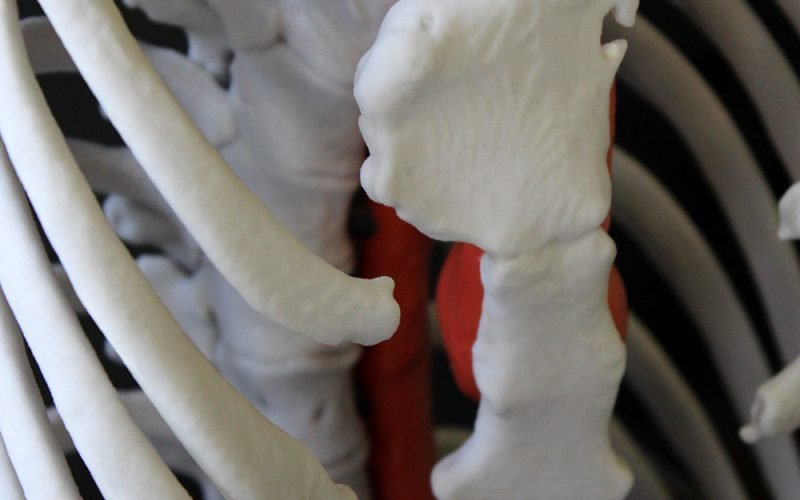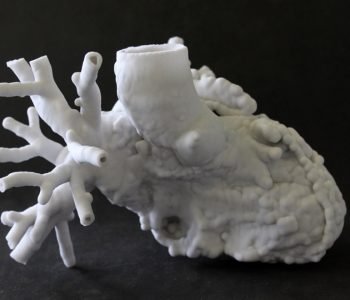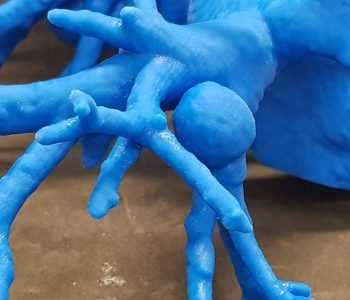Cardiosurgery
Multi-material 3D printing technology enables the tuning of deformability and transparency features, allowing to replicate as faithfully as possible the heart and all its surrounding structures both from the morphological and mechanical points of view. These models can be used to simulate the procedure, choosing the most appropriate instrumentation and surgical access.
On the other hand, rigid and colored models can be used as surgical planning tool and intra-operative guide, in case of complex pathological malformations, such as pectus excavatum or pulmonary/cardiac artery aneurysms.
The 3D printed model describes a case of thoracic depression (Pectus Excavatum) and includes the spine, the rib cage without cartilages, the sternum and the aorta up to the aortic root. The model has been useful to better visualize the anatomical relationships between the reconstructed structures, to properly plan the surgical accesses and the sternal repositioning procedure.
This patient-specific model represents the left atrium and ventricle of the heart, with pulmonary arteries and a small portion of ascending aorta. The model has been used to plan surgical accesses and to evaluate the accessibility from the left part of heart cavity to the pulmonary arteries, where the surgeon has to intervene. The model has been printed using Binder Jetting technology, in rigid mono-chrome plaster. After printing, the model has been drilled in order to actually simulate the planned surgical access and to test surgical instruments manoeuvre space.
The patient-specific model represents right and left pulmonary arteries affected by two aneurysms. It has been used for the surgical planning of the aneurysms’ exclusion by means of the placement of vascular endo-prosthesis. The model has been manufactured in a rigid photopolymer resin and it allowed a thorough visualization of the anatomical relationship between the aneurysms and the arterial vessels, especially in the tract called aneurysm “collar”.























